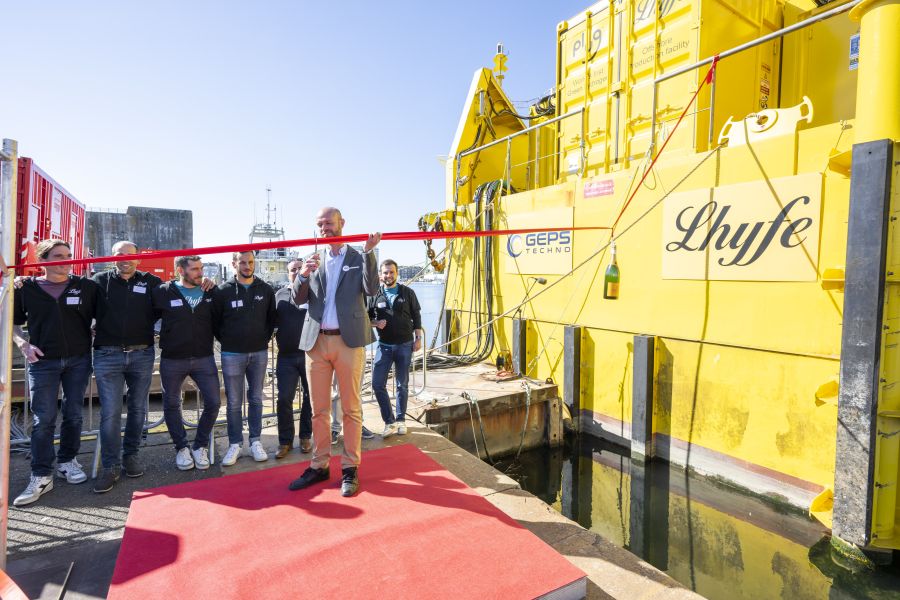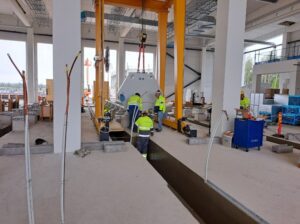On 22 September, French green hydrogen producer Lhyfe launched Sealhyfe, the world’s first offshore green hydrogen production facility. Located in the port of Saint-Nazaire, France, the Sealhyfe platform has the capacity to produce up to 400 kg of renewable green hydrogen a day.
Through this pilot site, Lhyfe will produce the first kilograms of renewable green hydrogen at quay and then at sea, operating automatically, in the most extreme conditions.
The Sealhyfe platform must therefore meet several major and unprecedented challenges, including:
- Performing all stages of hydrogen production at sea, i.e., converting the electrical voltage from the floating wind turbine, pumping, desalinating and purifying seawater, and breaking the water molecules via electrolysis to obtain renewable green hydrogen;
- Managing the effects on the system of the platform’s motion: list, accelerations, swinging movements, etc.;
- Enduring environmental stress: Sealhyfe will have to survive the premature ageing of its parts (corrosion, impacts, temperature variations, etc.);
- Operating in an isolated environment: the platform must operate fully automatically, without the physical intervention of an operator, except for scheduled maintenance periods which have been optimally integrated from the design phase.
The electrolyser was supplied and optimized for these exceptional operating conditions by Plug Power.
A multi-phase trial
The first, six-month trial phase is being started at quay, in the port of Saint-Nazaire, to obtain initial reference measurements and test all of the systems (desalination and cooling systems, stack behaviour, remote control, energy management, resistance to environmental conditions, etc.).
At the end of this first stage, Sealhyfe will spend a period of 12 months off the Atlantic coast. It will be installed less than a kilometre from the floating wind turbine, fixed to the ground by a system of anchors and connected to the site’s underwater hub using an umbilical designed and dedicated for this application (energy and data transfer).
At the end of this trial, Lhyfe will have a substantial volume of data, which should allow it to design mature offshore production systems and to deploy robust and proven technologies on a large scale.
Matthieu Guesné, Chairman and CEO and founder of Lhyfe, said: “At Lhyfe, we have only one aim: to leave a more breathable planet for our children. This is why we once again wanted to take up a major technological challenge, to prove – by producing hydrogen at sea for the first time – that it is possible to do it as of today. By paving the way for the mass production of renewable hydrogen at sea, Sealhyfe is fully in line with the EU’s strategy to deploy an offshore hydrogen chain, and wishes to help build the energy sovereignty of countries.”






